
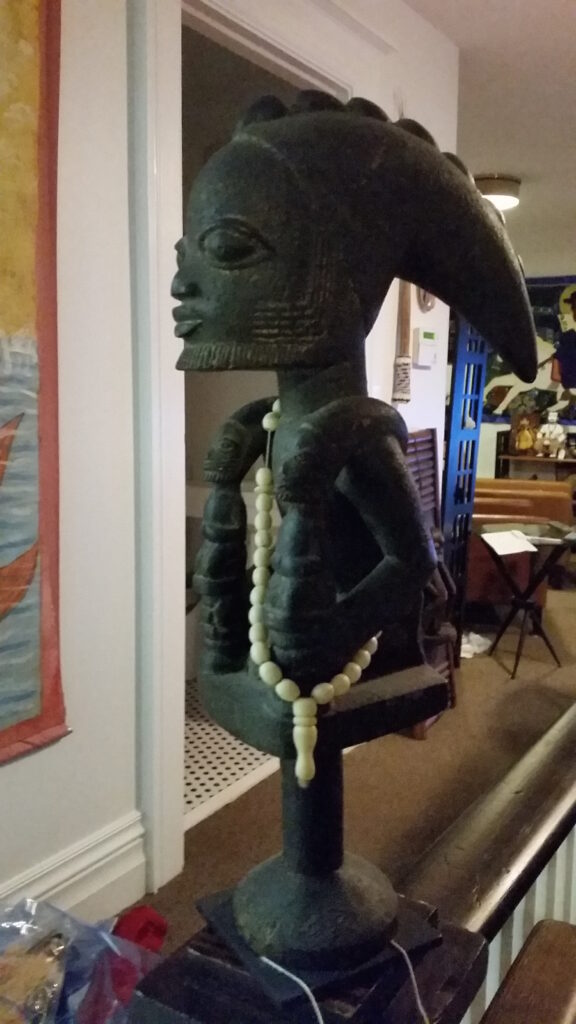
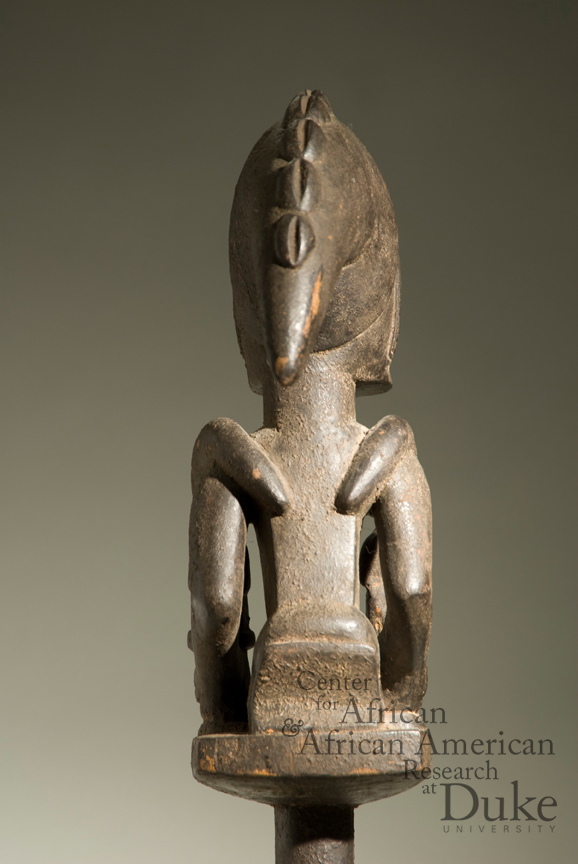
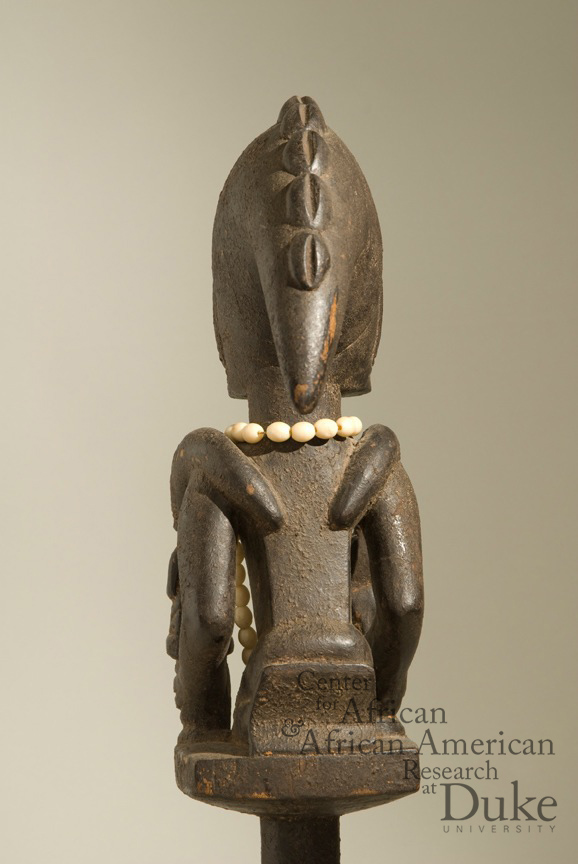

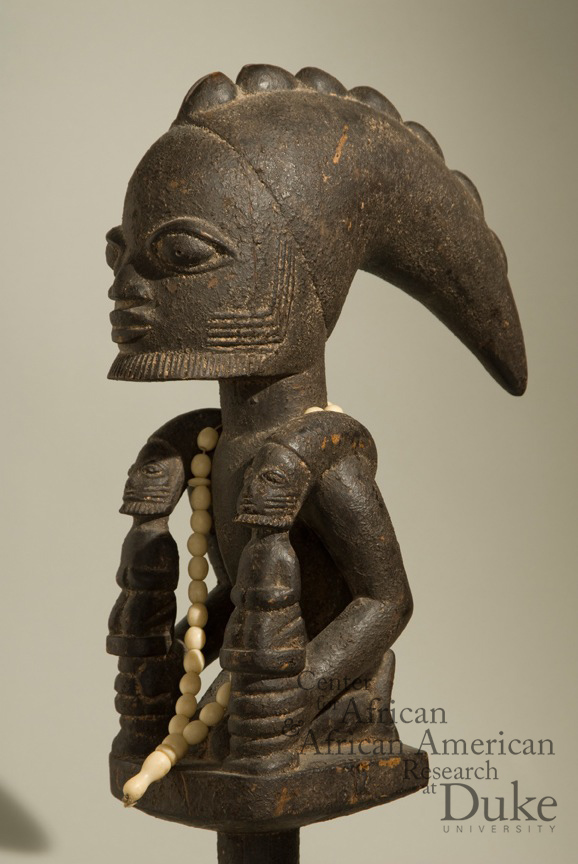
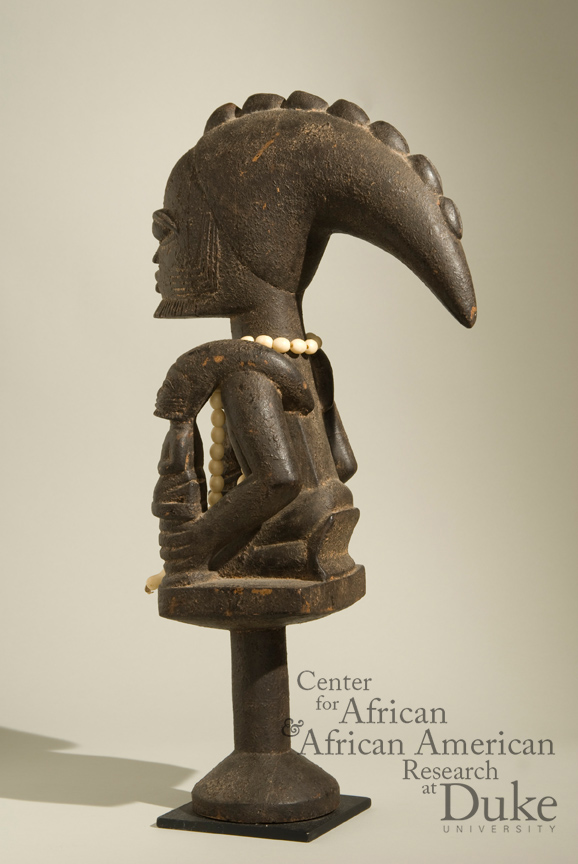
West African Yoruba artist
45.72 cm with 10.16 cm x 10.16 cm base, 22.86 cm-long head
(centimeters)
18" tall with 4"x4" base, 9" long head
(inches)
Priestess Talabi Adedoyin Faniyi offers this interpretation. The sacred number of Èṣù is 3, and that number is in evidence in this statue. The larger Èṣù grips two smaller, reflexive images of Èṣù, both demonstrating the proper use of the artifact and honoring Èṣù’s sacred number. Many images of Èṣù include only similar-shaped representations of his two eyes and mouth, further emphasizing the number 3; although this statue has more detailed facial features, the shape of the mouth still bears a strong resemblance to the shape of the eyelids. Other numeric significance is also in evidence in this depiction. The top of Èṣù’s head bears seven shells, which symbolizes many other òrìs̩à, and is a generally sacred number in Yoruba practice. This indicates Èṣù’s importance in the worship of òrìs̩à, as he is the messenger god and must be honored before establishing contact with any other òrìs̩à.
This depiction of Èṣù features a beard resembling that of observant male Muslims, possibly an indication of the influence of the Islamic faith in Yorubaland. The verbal and visual representations of many òrìs̩à credit those gods with the powers associated with Islam and/or the West while, at the same time ridiculing their ritual practices and their claims of superiority to òrìs̩à-worship. See Matory’s Sex and the Empire That Is No More (2005 [1994]). However, Adedoyin Faniyi denies the Islamic significance of the beard, and claimed that many depictions of Èṣù are bearded. Ultimately, the features of the statue are largely dependent on the devotee’s own personal preference.
In this artifact, Èṣù is depicted with his characteristic elongated headdress (ọ̀gọ́). This symbolically indicates Èṣù’s ability to see both behind and ahead; Èṣù “looks into everything” and is known to be extraordinarily wise and knowledgeable. As previously stated, Èṣù is always honored before òrìs̩à; his omnipresence is indicated by his ability to look both backwards and forwards. Both the larger Èṣù and the two smaller images he grips are portrayed in the kneeling position, indicating proper veneration. This position both indicates Èṣù’s importance in the worship of other òrìs̩à and the way that devotees would honor him using this statue.
Contact
Sacred Arts of the Black Atlantic Project, Duke University
Box 90091
Durham, NC 27708
Email
jm217@duke.edu